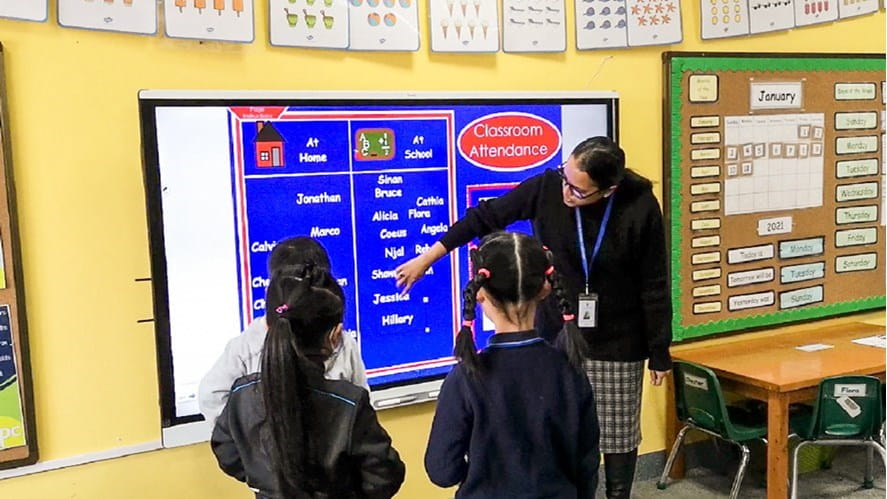More TV in the Classroom Please:
Author: Calib Sael
Published in: ESL
Growing up in Puerto Rico means being strongly influenced by American culture probably more than in any other part of the world. Radio stations constantly play American music, and the TV is full of American programs; most of them dubbed since Spanish is the first language of the majority. One of my favorite forms of entertainment is going to the movies, which in Puerto Rico is a completely different experience. Most movies in cinemas in Puerto Rico have subtitles in Spanish and are rarely dubbed (except for children’s movies). This meant reading the dialogue in Spanish while simultaneously listening to it in English. As a beginner reader, this proved to be a challenge. Trying to read the words before they disappear forever from the screen was a race against my reading skills I usually lost. But little by little, as my skills got better, I got to the point of being able to understand a whole movie. What a triumph that was! But then my journey switched, and that fluency reading practice became one of the best English teachers I ever had, which says a lot since children in Puerto Rico take English as a core subject since kindergarten. Today, as a bilingual teacher in Texas, I see children struggling with reading and the English language on a daily basis. This has made me wonder if there are instances in which subtitles and captions have been used successfully to increase reading skills and English proficiency. My experience was not by any means a systematic approach, but maybe with some researched techniques I can improve and replicate it to help struggling readers.
One of the best examples on how subtitles can help with literacy comes from India. In a 2008 article, Brij Kothari, Tathagata Bandyopadhyay, and Debanjan Bhattacharjee study the impact of Same Language Subtitling (SLS) in readers from three different levels: good readers, early-readers, and non-readers. In the study they track the progress in literacy of viewers of two song programs, Chitrahaar and Rangoli, with and without SLS. Researchers found literacy levels improved considerably on viewers with SLS in all three levels. After five years of schooling, only 24% of children who did not have exposure to SLS became proficient readers. On the other hand, 56% of children with regular exposure to SLS programming became good readers. Researchers stated that, “It is claimed that SLS creates a context in which reading skills are practiced, automatically, incidental, and subconsciously by millions of children and adults. In the process, SLS leads to reading skill improvement” (“Same Language Subtitling on TV: Impact on Basic Reading Development among Children and Adults,” planetread.org, January 2008). In other words, not only did viewers practiced their reading skills, but they did it without even knowing it.
As we can see, captions and subtitles can be a great tool to increase literacy skills, but they can also provide help with second language acquisition. Hsin-Chuan Huang and David Eskey studied its effect on English as a second language students (ESL) with intermediate level. These researchers found many areas in which the use of captions can benefit ESL students and improve a variety of linguistic abilities like: general comprehension, vocabulary acquisition, and listening comprehension. Researchers quote
“As Newman and Koskinen stated, students might establish the relationship between words and
meanings through TV’s combination of pictures and sounds. TV’s entertaining qualities make it an easier medium to access than text, and it also minimizes fear of failure in learning” (The Effects of Closed-Captioned Television on the Listening Comprehension of Intermediate English as a Second Language (ESL) Students, Journal of Educational Technology Systems, 1999). In other words, not only it helps with linguistic skills, but it can actually reduce the anxiety students experience when dealing with a second language by making it more accessible and engaging. In fact, Deborah Linebarger describes the level of engagement as: “In sum, television captions, by evoking efforts to read, appeared to help a child focus on central story elements and away from distracting information, including sound effects and visual glitz” (“Learning to read from television: The effects of using captions and narration”, Journal of Educational Psychology, Jun 2001).
Although Hsin-Chuan Huang and David Eskey focus their research on students with an intermediate level of English, we can infer that with certain adjustments this can also be used with all levels. Chrissine Rios from the Kaplan University Writing Center states, “Watching programs in English and referring to subtitles in your first language to maintain the show’s context or clarify a new word can improve your listening skills and show you how English speakers use gestures to construct meaning” (“Practical Ways to Improve Your English”, kucampus.kaplan.edu, March 2013). Put differently, ESL students with low proficiency can use captions in their own language to clarify words they don’t understand. According to the author, caption videos can even help with body language, a language skill many forget to address in ESL classes.
The idea of using subtitles and captions in the classroom is not new. From the late 1980’s, when the technology started to spread, many researchers and educators have spoken in favor its use as a powerful educating tool. None the less, over twenty years later, its presence in classrooms could still be underappreciated. The amount of lesson choices it provides for teachers to help with reading and language proficiency skills should make it an essential and versatile tool. Teachers could have kids watch videos repeatedly without sound to improve fluency skills or with sound to increase hearing comprehension. The amount of possible uses could be as big as the ingenuity of the teacher, and with the help of parents, students could be watching TV with closed captioning at home turning a normally non-educational activity into something that might help students from all levels succeed academically.

